
A Cotswolds Crawl
Had a good day out last Monday, 5th May, mopping up a whole swathe of Gloucestershire churches east of Cirencester which I had hoped to do with a friend a year or so ago, only to discover he had just done many of them the previous week!
St Michael, Poole Keynes
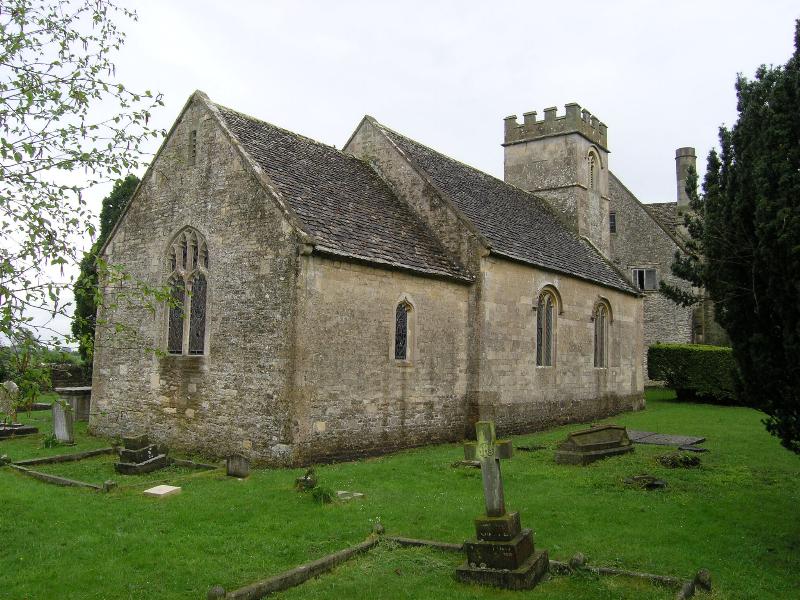 |
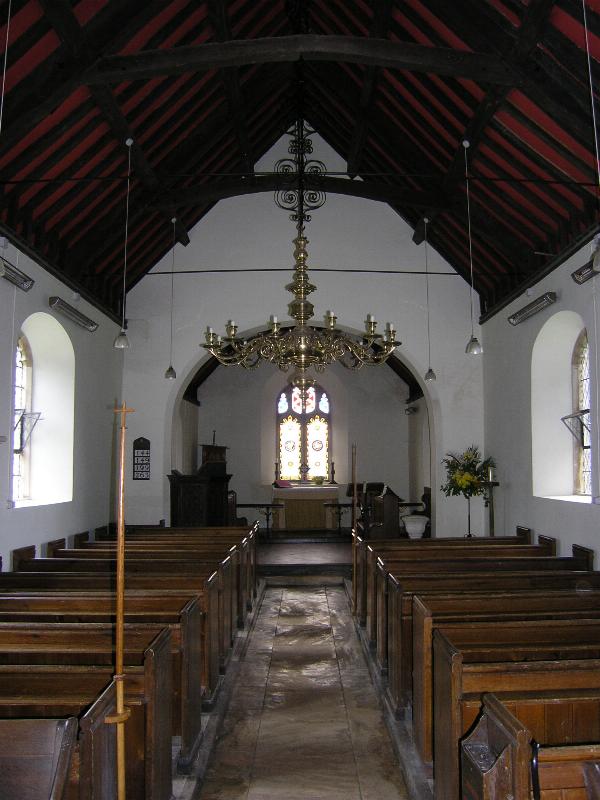 |
My first stop at Poole Keynes found a simple church, west tower, nave and chancel only. The church appears medieval but a closer inspection reveals some unusual details which suggested a post-medieval rebuilding and some C19 attempt to put things right. (BoE confirms a rebuilding in 1775). The entry is via the west tower, which has an interesting cartouche monument incorporating a small female figure at the top who seems to wave a greeting to visitors. Not much to see inside, a slim baluster font of the C18, a pulpit that seems to incorporate medieval panels, and a large brass chandelier of 1740. [church open]
All Saints, Shorncote
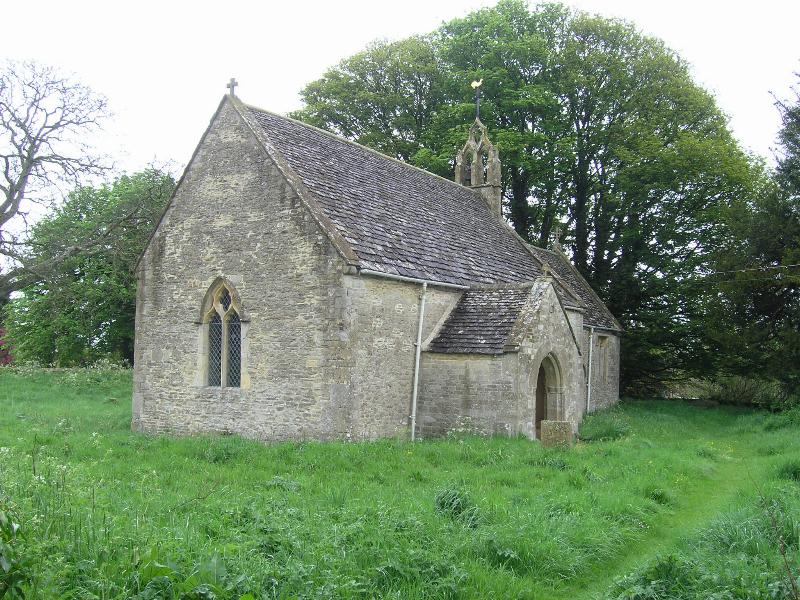 |
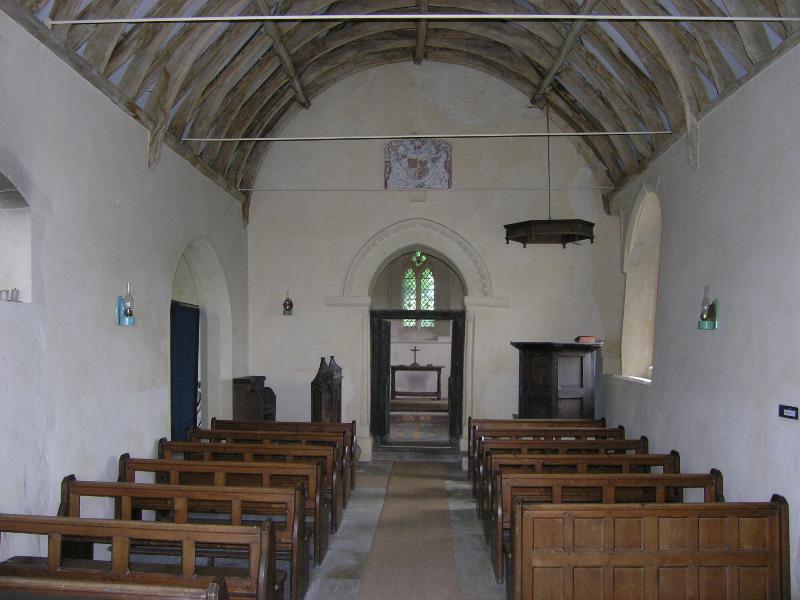 |
There isn't much to Shorncote, apart from a few cottages, and a couple of farms, which explains perhaps why the church now is vested in the Churches Conservation Trust. The church is simple, nave and chancel with a north transept and south porch. The bellcote however is something special, to house three bells, and was a feature which was to reoccur in other churches today. Norman doorways, the north blocked and the more elaborate. Inside wagon roofs, that in the chancel ceiled and with small bosses. Narrow early pointed chancel arch complete with C15 screen which is in reality a pair of tall traceried gates. The chancel preserves medival wall paintings, mainly patterns and foliage. One norman splayed window blocked and altered in the C15 to be an Easter Sepulchre. Early C18 pulpit with tester suspended above. [church open]
All Hallows, South Cerney
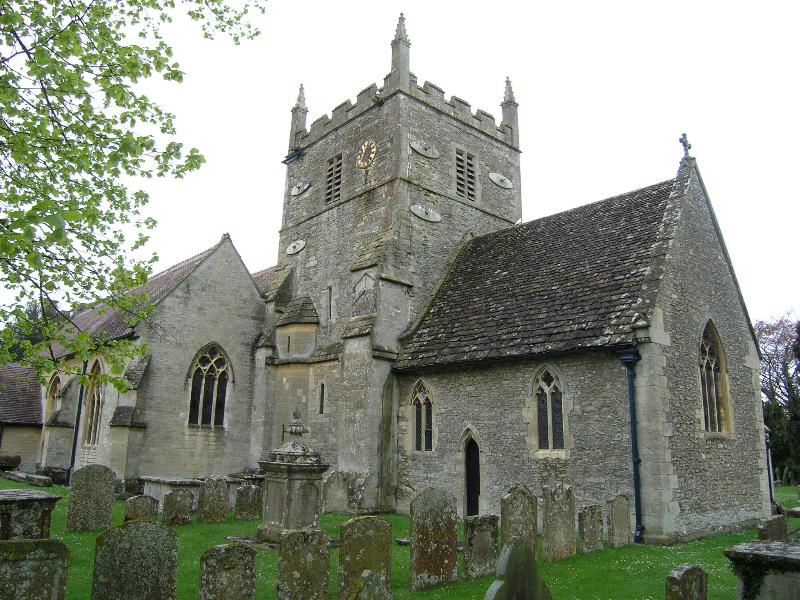 |
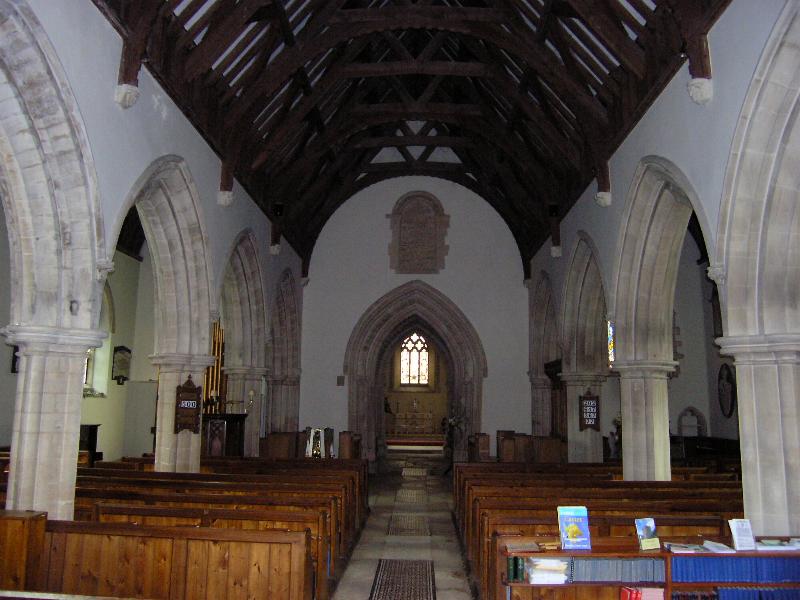 |
I was greatly surprised at the size of the place, almost a small town, but off the main roads. The church too is large, with a central tower, which once carried a stone spire which was struck by lightning in 1857 and never rebuilt. [The guidebook has am early photograph showing the spire.] However much of the church is over restored and the south aisle is Victorian, its arcade copying that opposite and the south wall has a fantastically rich reset Norman doorway. This level of ornamentation occurs again in the Transitional Norman tower arches and in the Dec C14 work in the chancel, the east window with tracery enriched by ballflower inside and outside. Jarring outside in its newness is a toilet block where one might expect a north transept, but with diaper traceried windows and a similar patterning in the gable end.
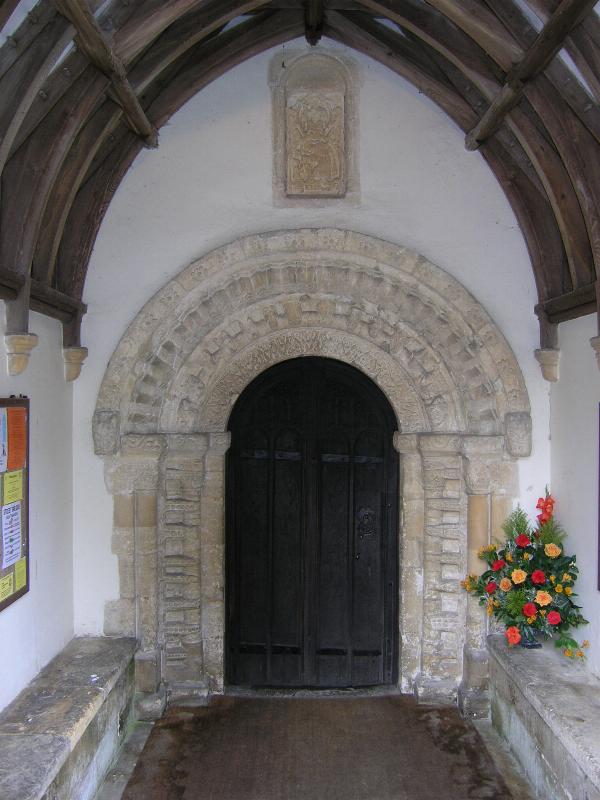 |
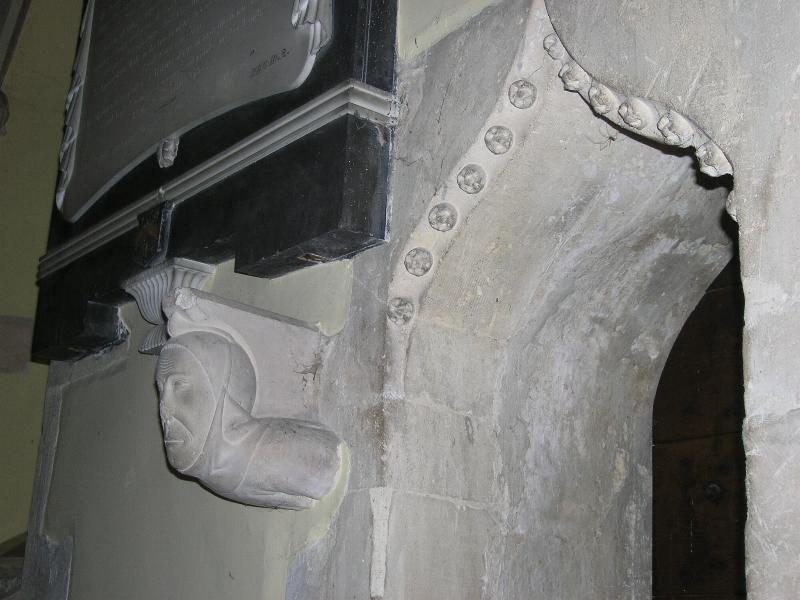 |
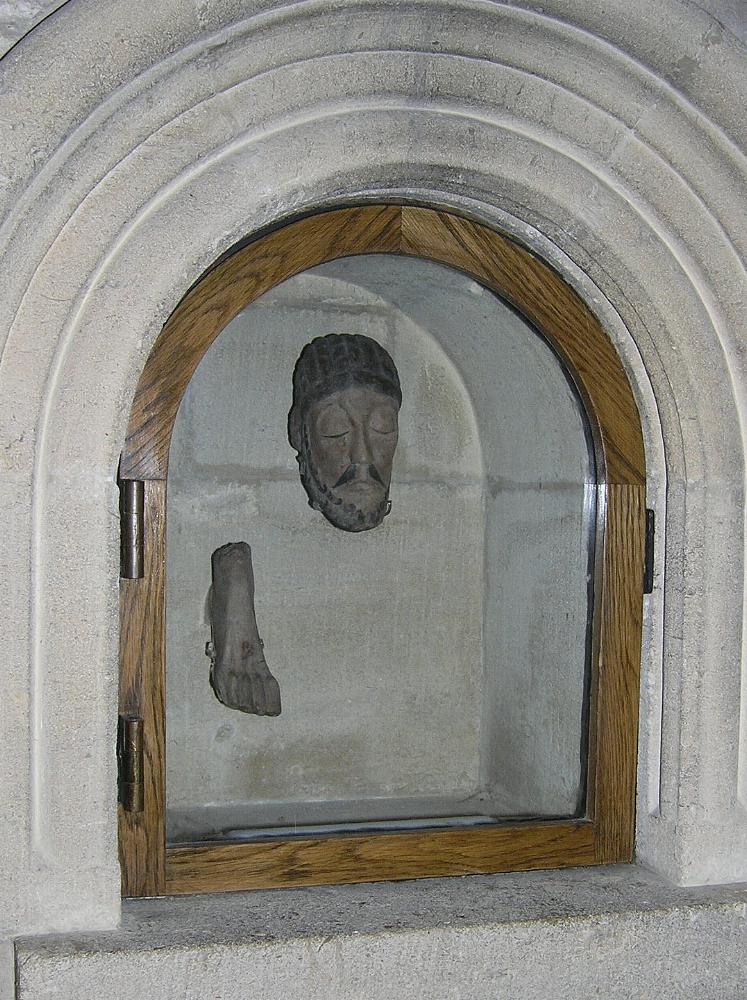 |
The chancel has an unusual male-head corbel placed just east of the ogee headed priests door, and an angle double piscina with shelf vault and openwork canopy of foliage incorporating another male head. The remarkable head and foot from a C12 wooden crucifix are long gone off on "loan" to the British Museum, but replicas made from resin now repose in a recess under the tower. [church open]
St Peter, Siddington
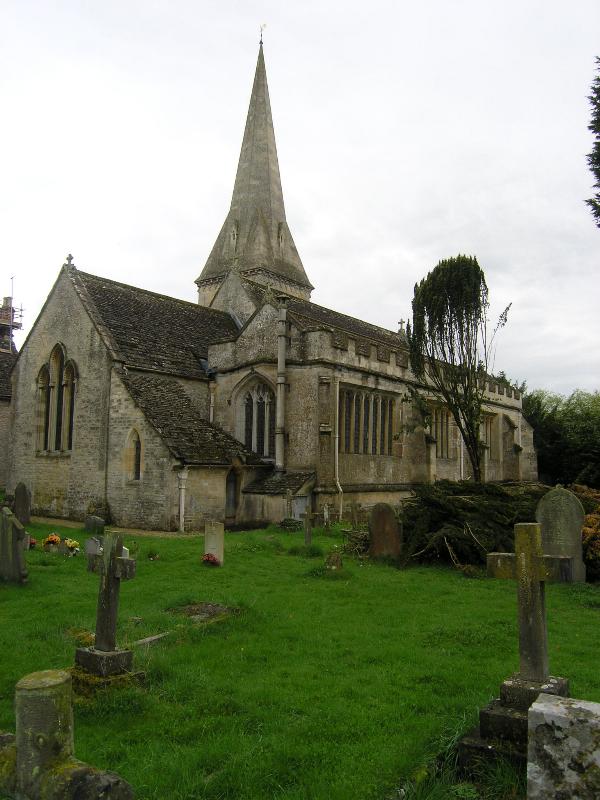 |
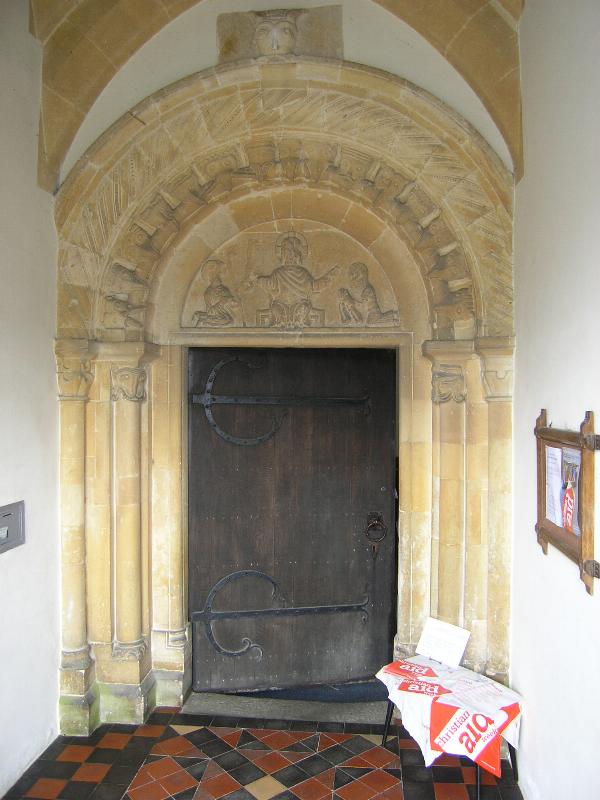 |
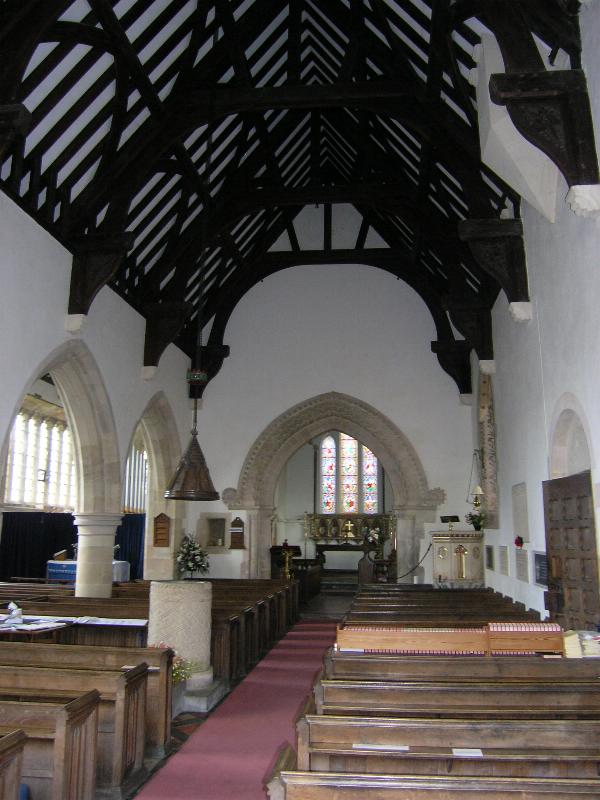 |
On the outer edge of Cirencester, but still feeling seperate. As you approach the church everything looks Victorian, but the north side of the church is fine C17 Gothic with very large square-headed windows to this aisle. The south-porch tower also shelters a fine Norman doorway. The tympanum shows "Christ in Majesty flanked by two kneeling figures, one St Peter, the other possibly a donor" (BofE) but the central figure holds the keys, the figure to the left has a halo, the one on the right not so is this St Peter sitting in judgement? Inside the chancel arch is Transitional with a pointed arch but the familar Norman enrichments to the outer two orders. The C19 work is good, and by Woodyer. The aisle has a fine original panelled roof rsting on angel-carrying-shields corbels, and an east window with two nuches to the left but none on the right, an unusual arrangement. Norman too the richly carved drum-shaped font with a jaunty neo-Norman conical cover suspended over. [church locked, but keyholders listed]
[Lunch taken at The Greyhound pub in the village, good but a little over-priced]
All Saints, Preston
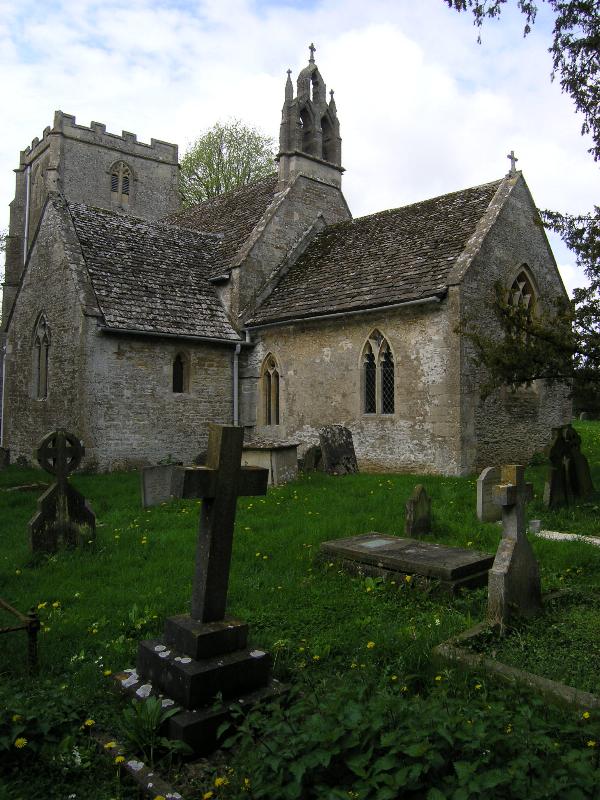 |
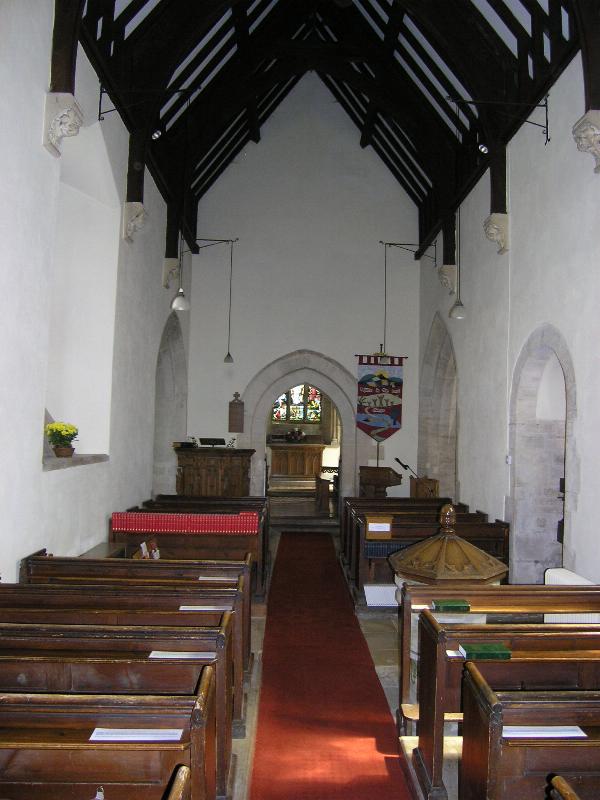 |
A small shaded footpath leads to the church from the main road. Here is an oddity, a church with a massive west tower but also a large triple-bellcote over the chancel arch. A lofty narrow nave suggests Saxon origins, and has large transepts and a south porch, and a chancel. The tower looks as is a further stage was intended from its bulk, and the embattled parpaet looks a bit of an afterthought. Outside by the porch a tomb slab with a carved head, much worn. [church locked, but keyholders listed]
St Mary, Driffield
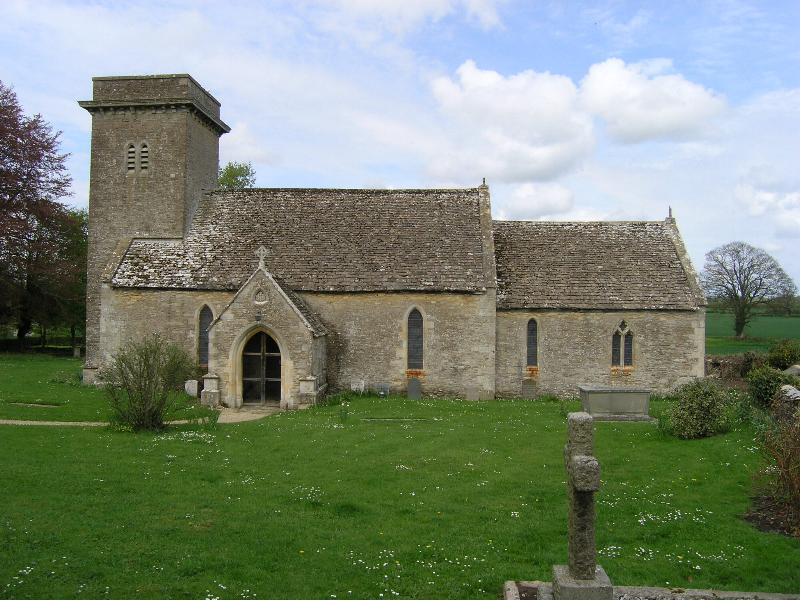 |
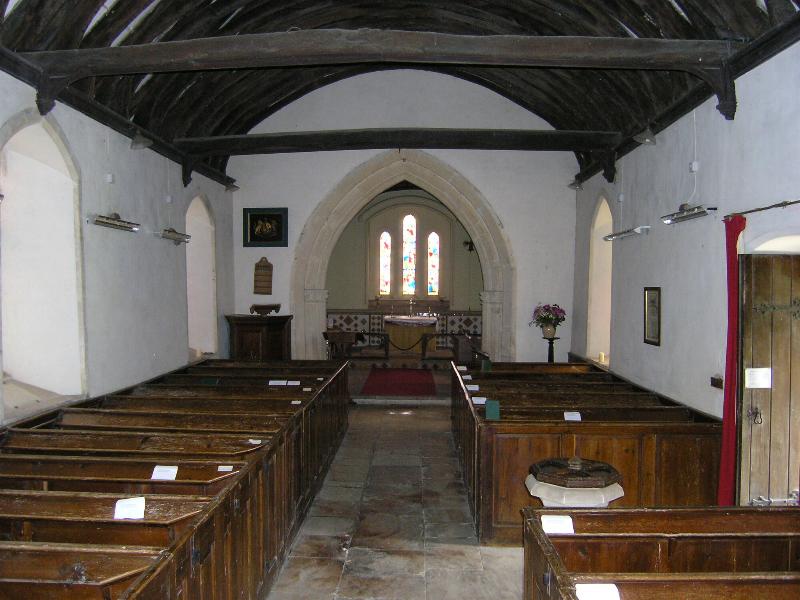 |
A small church in a large churchyard, west tower nave south porch and chancel. Much rebuilt, although it seems the C18 is to blame again, with a C19 going over that followed. Over the south doorway is a reset tympanum. Inside quite low with wagon roofs and a set of box pews. [church open]
St Michael, Harnhill
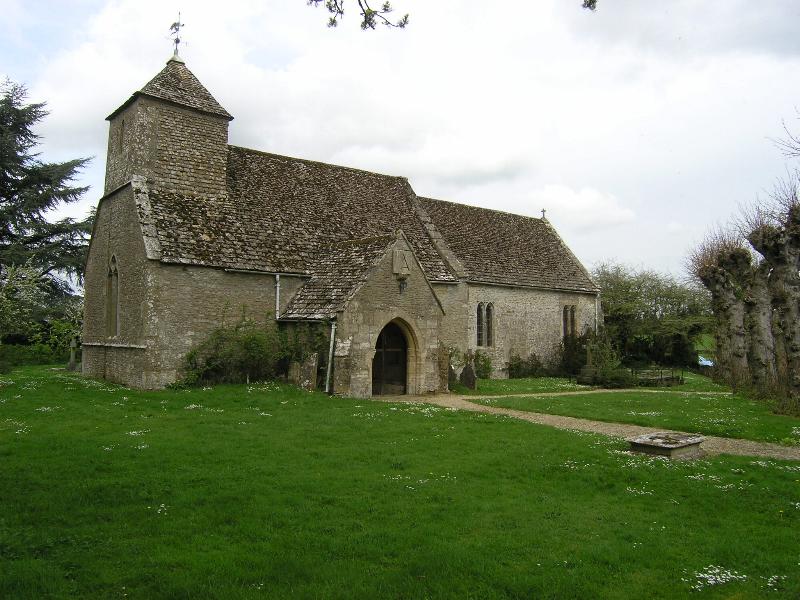 |
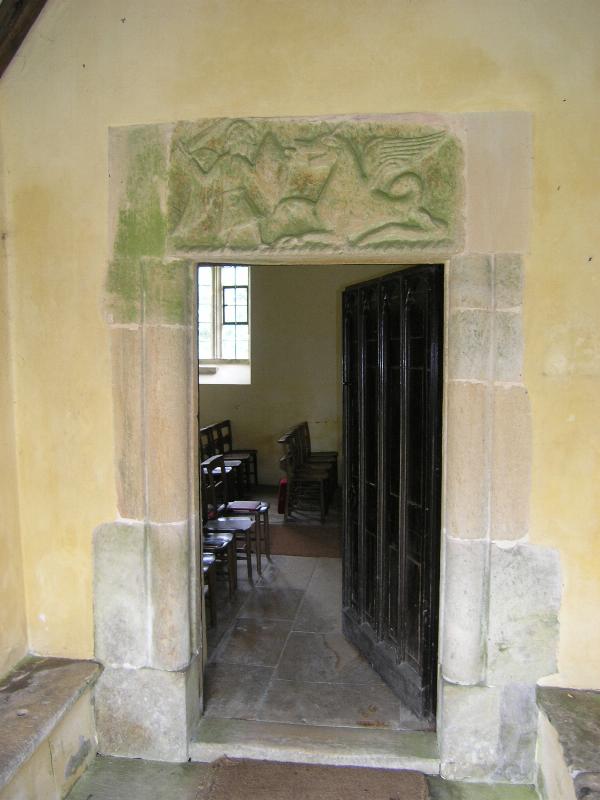 |
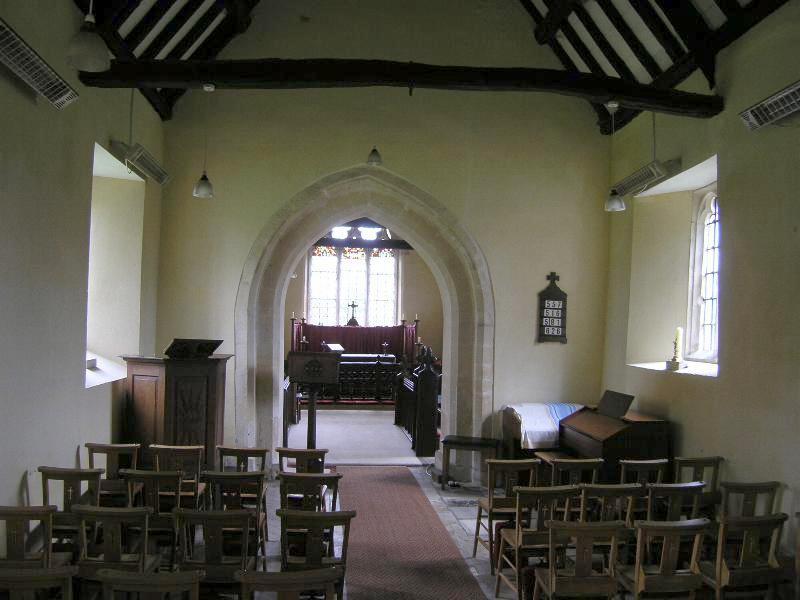 |
The area around the church is much spruced up and rather cut off from the village, becasue it stands amidst the Harnhill Centre for Christian Healing, of which I know nothing except it necessitated the provision of a large car park and a new road to "Harnhill Centre". The church consists of a nave with south porch and chancel. No tower but a sizeable shingled turret over the west end as if in the Home Counties. It is charming but rather devoid of interest once you have examined the tympanum over the south door of St Michael slaying a dragon which must be some 900 years old. [church open]
St Peter, Ampney St Peter
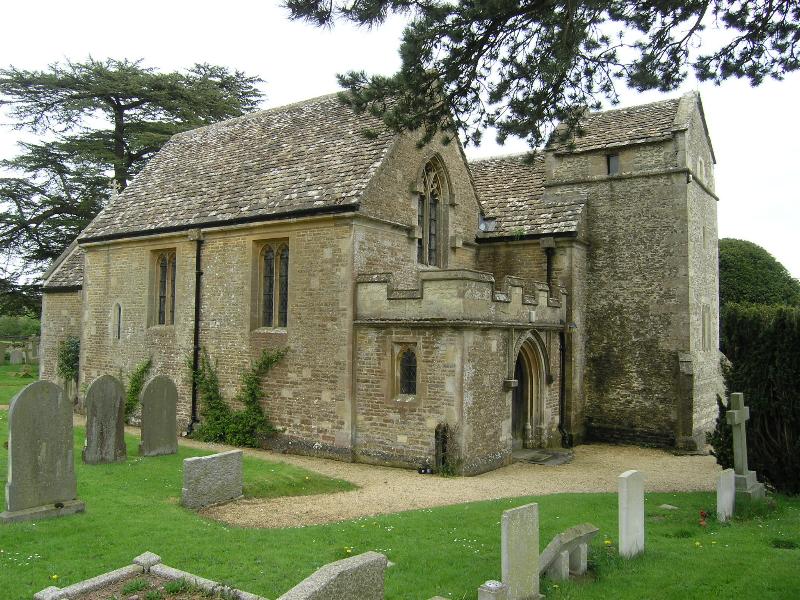 |
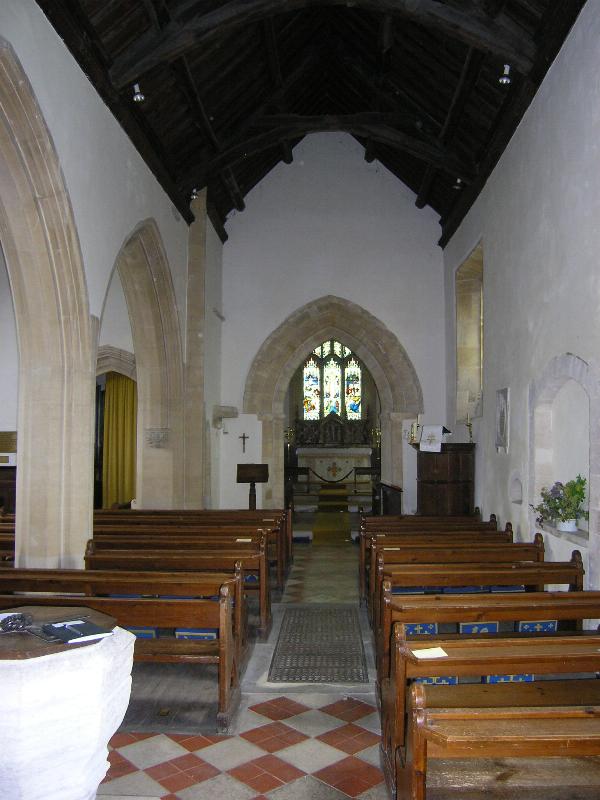 |
Merges with its village and hard to spot, its small tower barely rising above the roof of the nave and somewhat dwarfed by the large C19 north aisle. The lower part of the tower and the nave in fact are late Saxon work, almost 1000 years old but apart from the tower arch inside without surviving features. What date the Sheila-na-gig figure on the north wall of the nave (must be reset surely from outside?) by the C16 font or the modern-looking-but-maybe not seated figure of St Peter in the chancel? [church open]
St Michael, Poulton
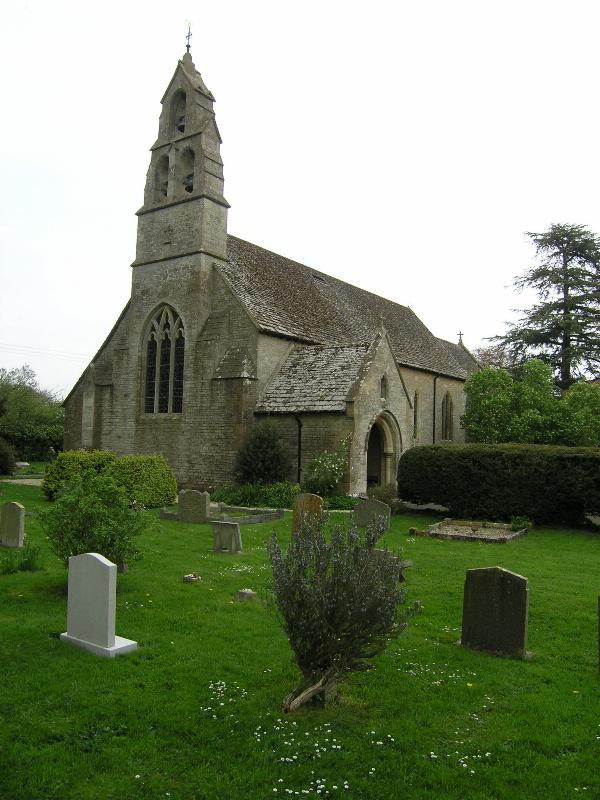 |
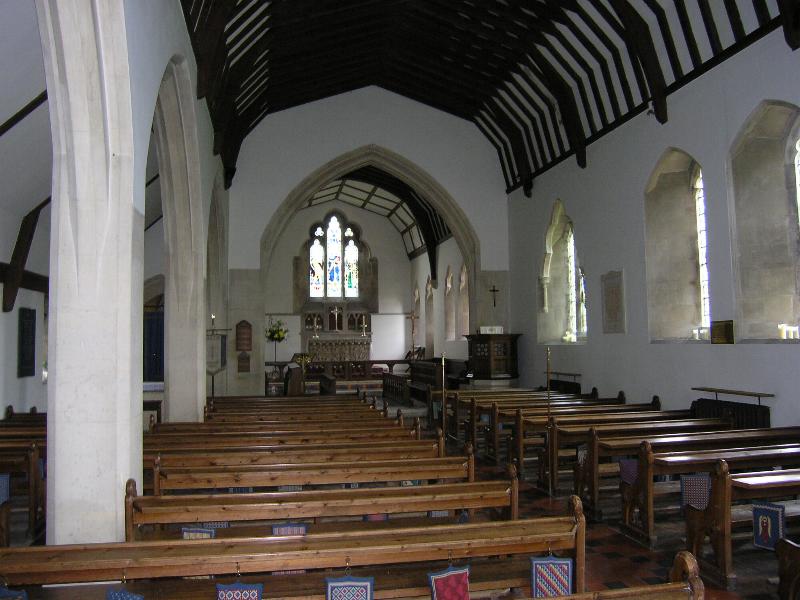 |
Another pictureseque village but the church is disappointingly a C19 rebuilding (1873-74) with nave with W triple bellcote, south porch, north aisle and chancel. Quite large but dull. A surprise to discover that the architect was William Butterfield. [church open]
St Mary, Ampney St Mary
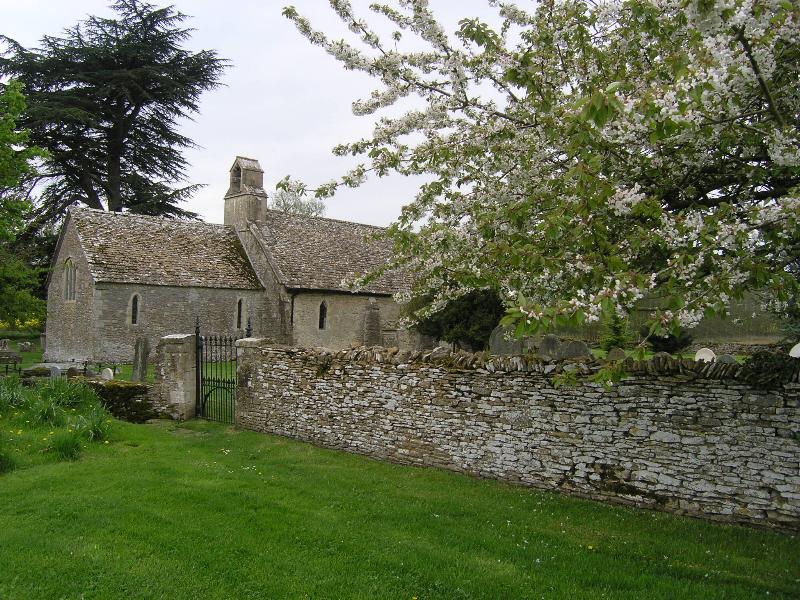 |
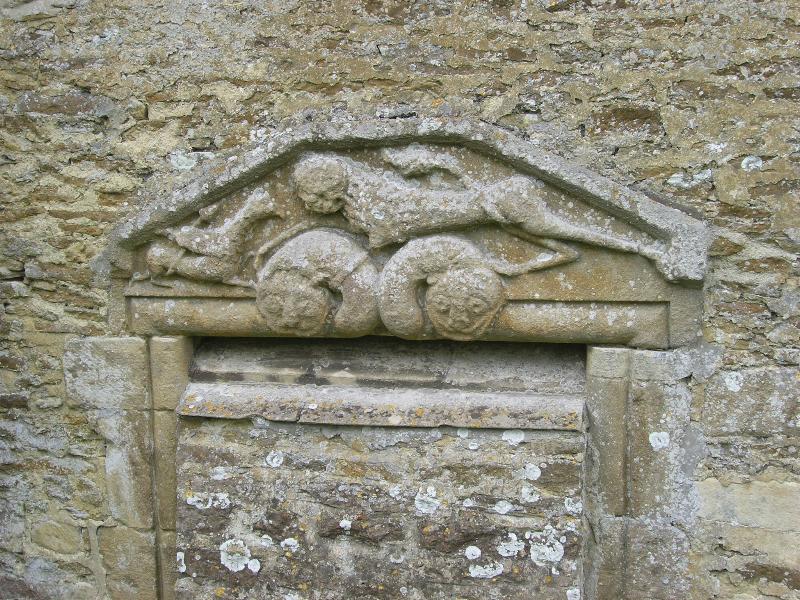 |
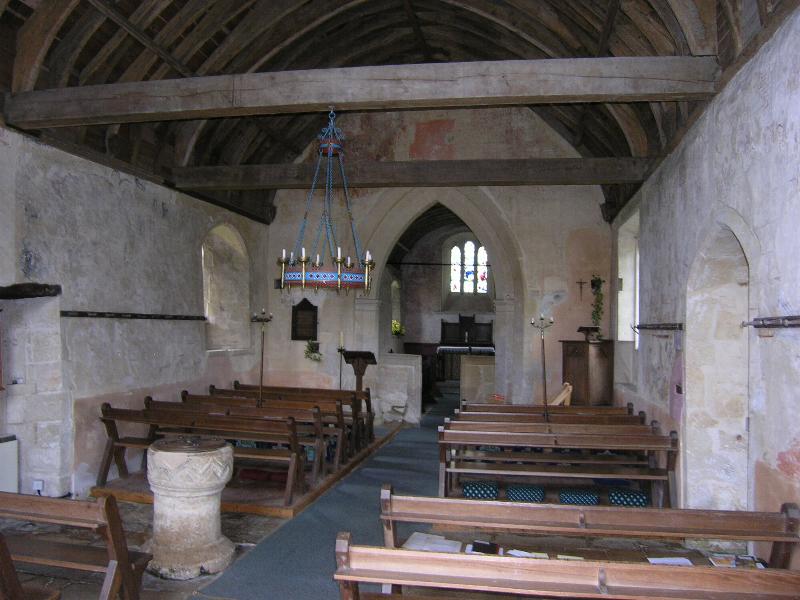 |
Known locally as the Ivy Church, because it was abandoned and brought back to life after emerging from under an ivy canopy in the early C20. The village of Ampney St Mary today is on the far side of Ampney Sy Peter to this church! Consequently the church has been sensitively restored, and inside there are considerable surviving wall paintings, although they are difficult to make out (oddly they are easier to see in my photos!) Unusual Norman tympanum or rather lintel, with four strange beasts, two ammonite-like creatures below, with a large animal above attacking the left hand one, whilst further left comes what looks like a goose with a spear! [church open]
Holy Rood, Ampney Crucis
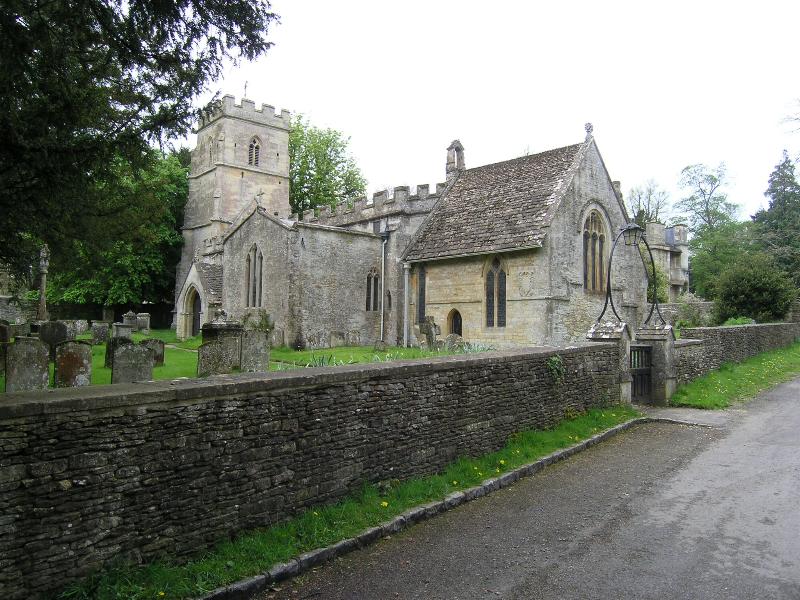 |
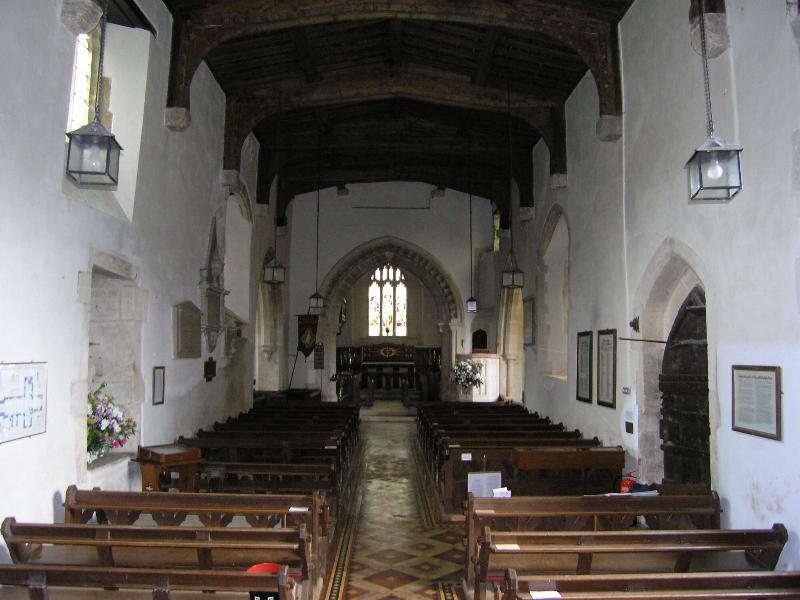 |
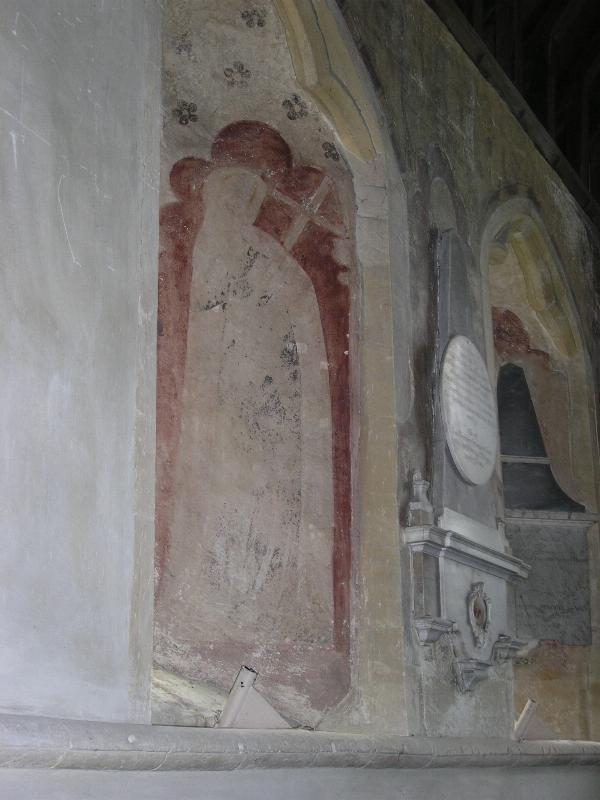 |
The largest of the three Ampneys, with an aisleless cruciform church and proud west tower. In the churchyard a medieval cross with a fine head carved on all four sides, including a scene of the Crucifixion. The north transept also has medieval wall paintings, largely in the splays of the large lancet windows, but those that were once in the nave only survive in framed cartoons. In the same transept a large canopied tomb with recumbent effigies and a host of kneeling children in panels below. [church open]
St John the Baptist, Shipton Moyne
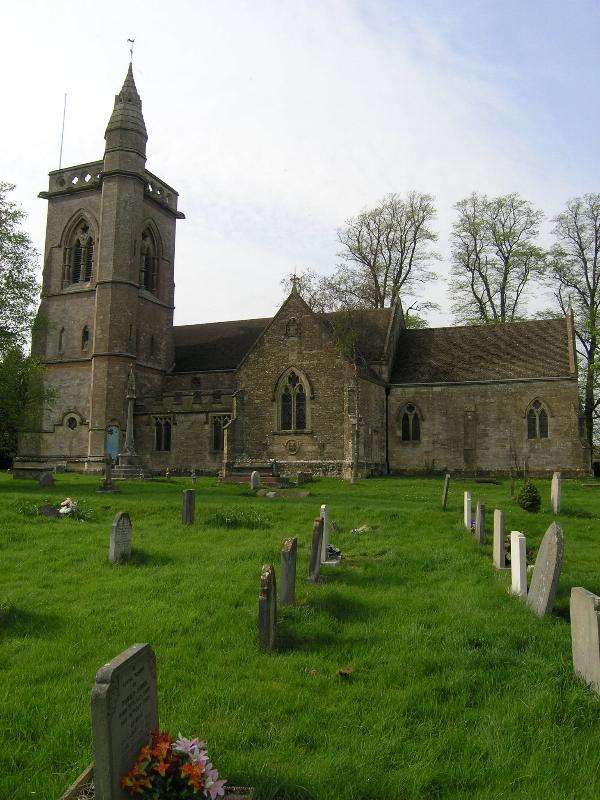 |
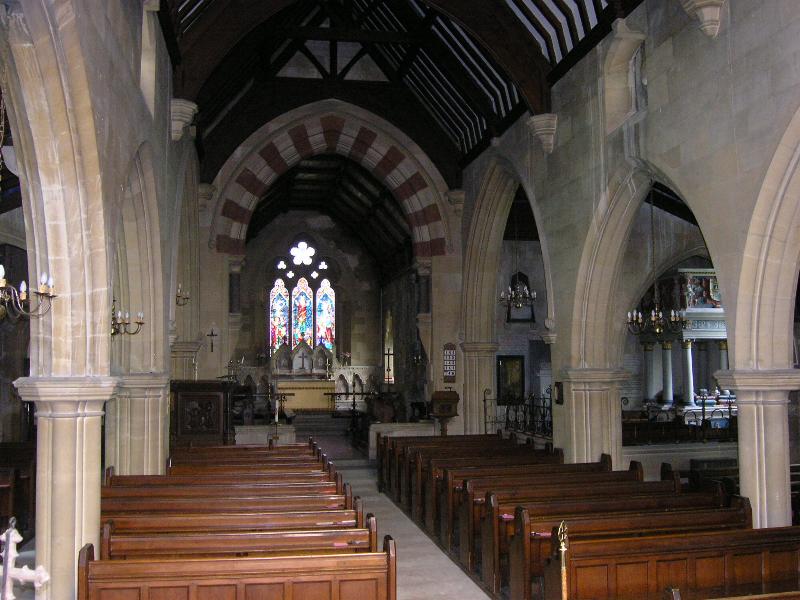 |
I have been meaning to revisit here for some time as I could hardly remember it apart from the massive Victorian tower with its overlarge stair turret pinnacle and vaulted entrance with memorials. It was the days of pre-digital (over 20 years ago too) and my interiors never came out. The tower stands at the south west corner, and all honesty I thought the church was locked but one hefty last shove with the shoulder saw the heavy door open. The church is another by T H Wyatt, and the master of the banal restoration was really rather good when given a good budget to work with. The font is large butterfieldian, and the pulpit is enormous wooden with Italian bas-reliefs. However the north aisle of the old church survives, Perp, as does the north porch, although restored, and the south aisle is built to match. Also surviving from the earlier church is the south transeptal Escourt family chapel.
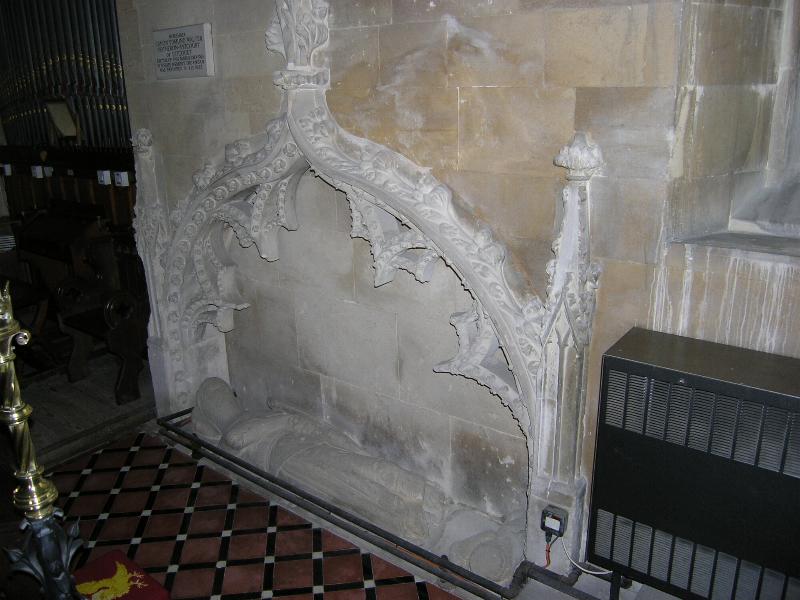 |
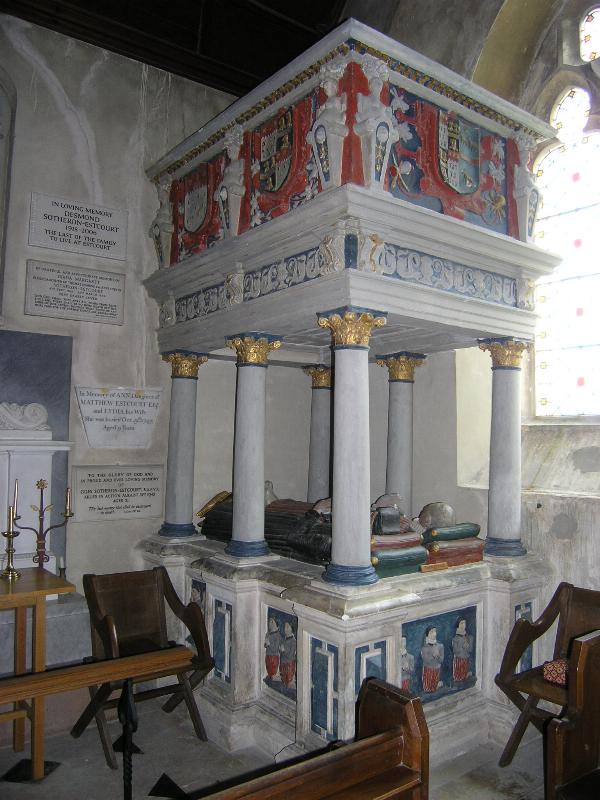 |
The chancel has three elaborate C14 cusped ogee-arched tomb recesses decorated with ballflower with effigies of two knights and a lady. The Escourt chapel has a large painted canopied tomb with recumbent effigies and panels with children, looking very impressive as an ensemble but with rather rustic carving and decoration. Other good monuments from the C18 and earlier C19 too. [church open]
So a good outing, 12 churches in all, and a surprising 11 new targets for me. 10 open, two more with keyholders, and none defeated me!